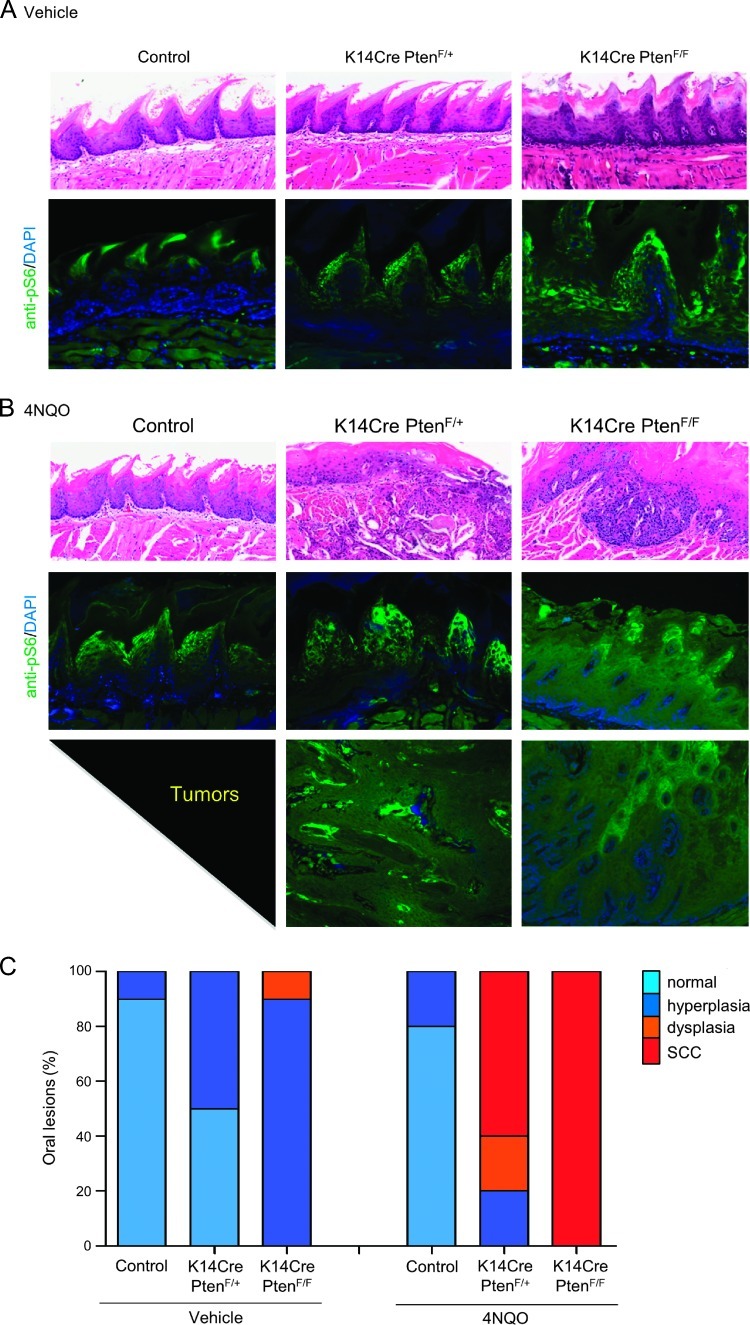Figure 4.
Gradual loss of Pten leads to increased number of carcinomas in the oral cavity after exposure to 4NQO. The tongue of every mouse from control, K14Cre PtenF/+, and K14Cre PtenF/F groups (n = 10 per group) was processed for histologic examination as described in Materials and Methods section. Representative histologic pictures (H&E stain) of each group of mice treated with vehicle (A) and 4NQO (B) are depicted. (A) Representative example of tongue histologic section from control mice (vehicle treated) displaying normal histologic features. Hyperplasia and dyskeratosis are common features of K14Cre PtenF/+. K14Cre PtenF/F dysplastic changes such as hyperchromatic nuclei, acanthosis, dyskeratosis, loss of epithelium polarity, and hyperkeratosis (see text for details) were also seen. Positive immunoreactivity of the mTOR downstream target pS6 in normal tissues is limited to the upper layers of the squamous epithelium of the dorsal tongue (control/vehicle). Increased expression of pS6 is found on K14Cre PtenF/+ and K14Cre PtenF/F mouse tissues. Most keratinocytes from K14Cre PtenF/F mice displayed pS6 expression regardless of their differentiation stage. (B) Exposure to the carcinogen (4NQO) induced moderate histologic changes in control mice (hyperplasia and dyskeratosis). K14Cre PtenF/+ and K14Cre PtenF/F developed carcinomas in the tongue. Dysregulated activation of mTOR (shown by pS6 expression) is found in all mouse groups treated with 4NQO. pS6 immunoreactivity is further increased by the Pten ablation (as seen in K14Cre PtenF/+ and K14Cre PtenF/F). The lower photographs show high up-regulation of mTOR activity (pS6 expression) in tumors with Pten ablation (left, K14Cre PtenF/+; right, K14Cre PtenF/F). (C) Normal, hyperplasia, dysplasias (preneoplastic lesions), and carcinomas were evaluated in histologic slides from the tongue of each animal. The results are expressed as percentage of the total changes in each experimental group.

